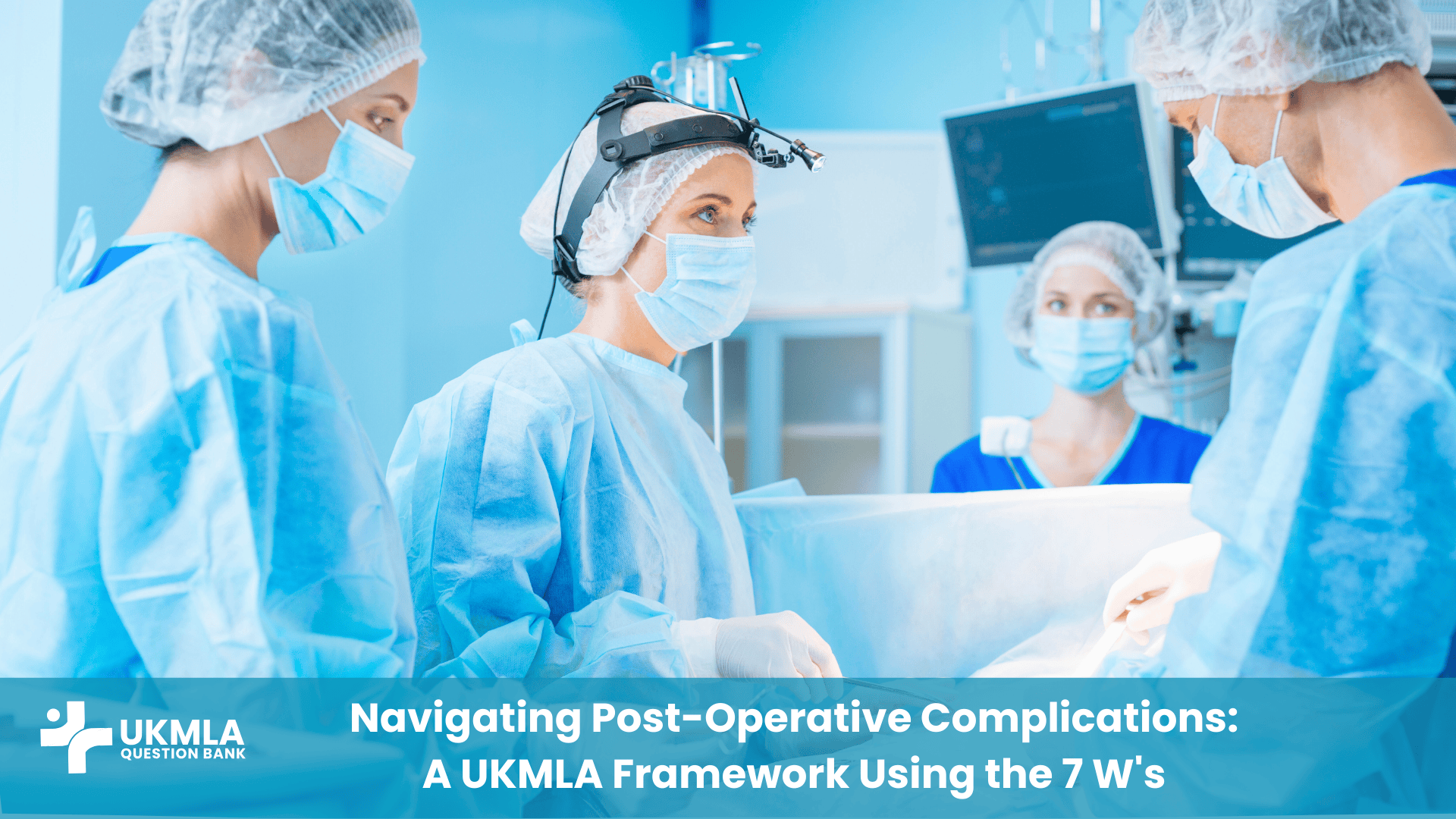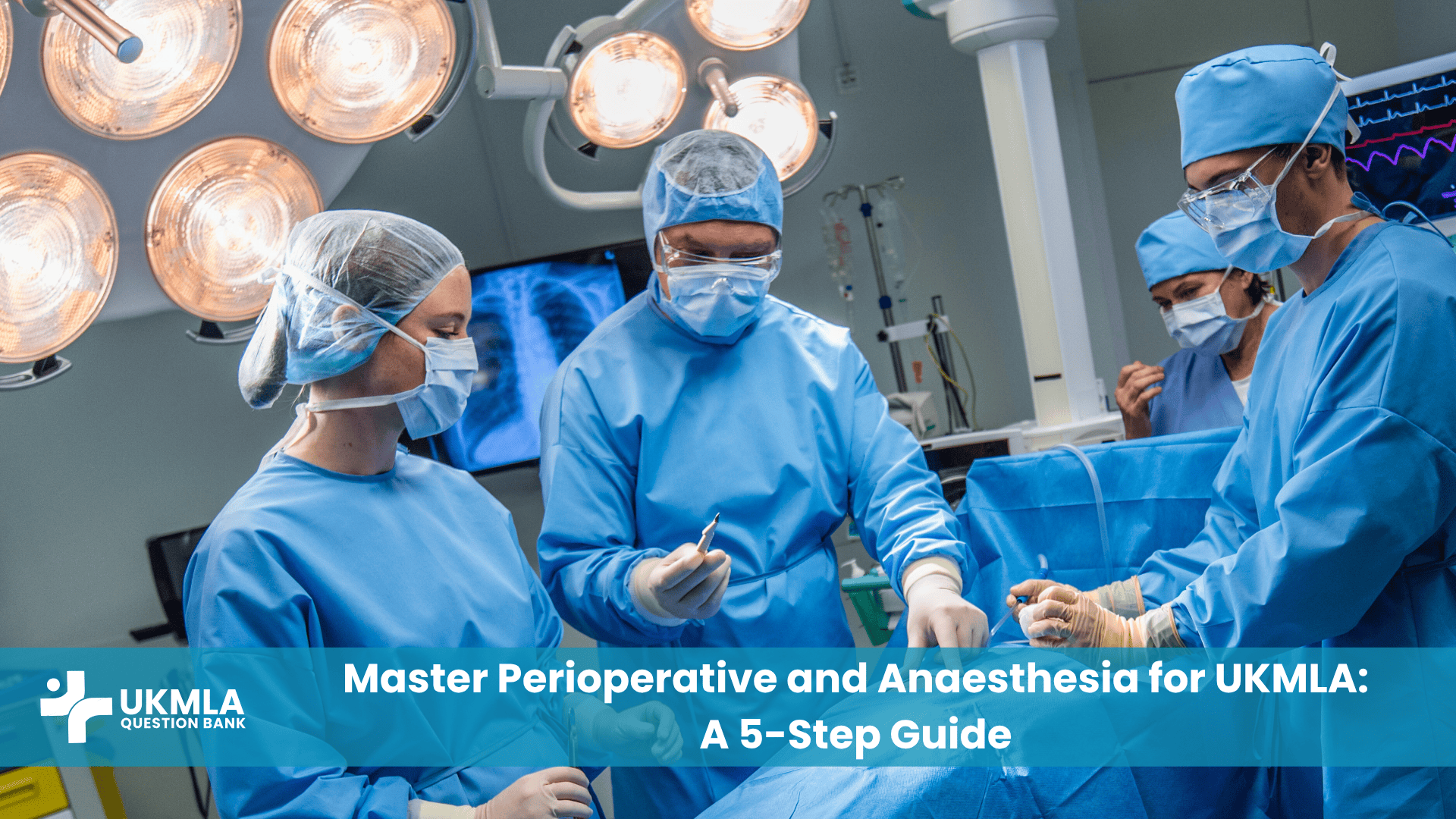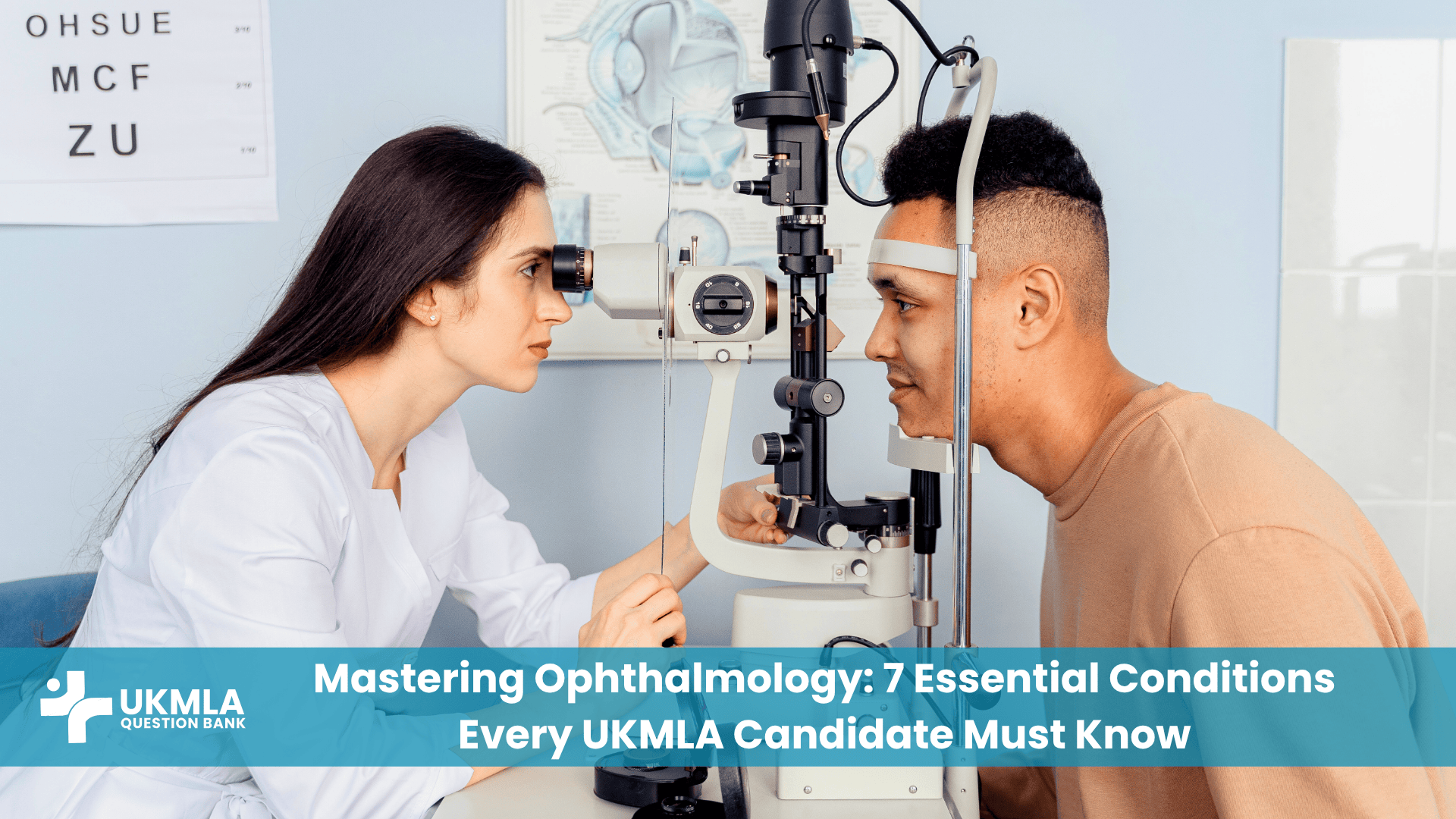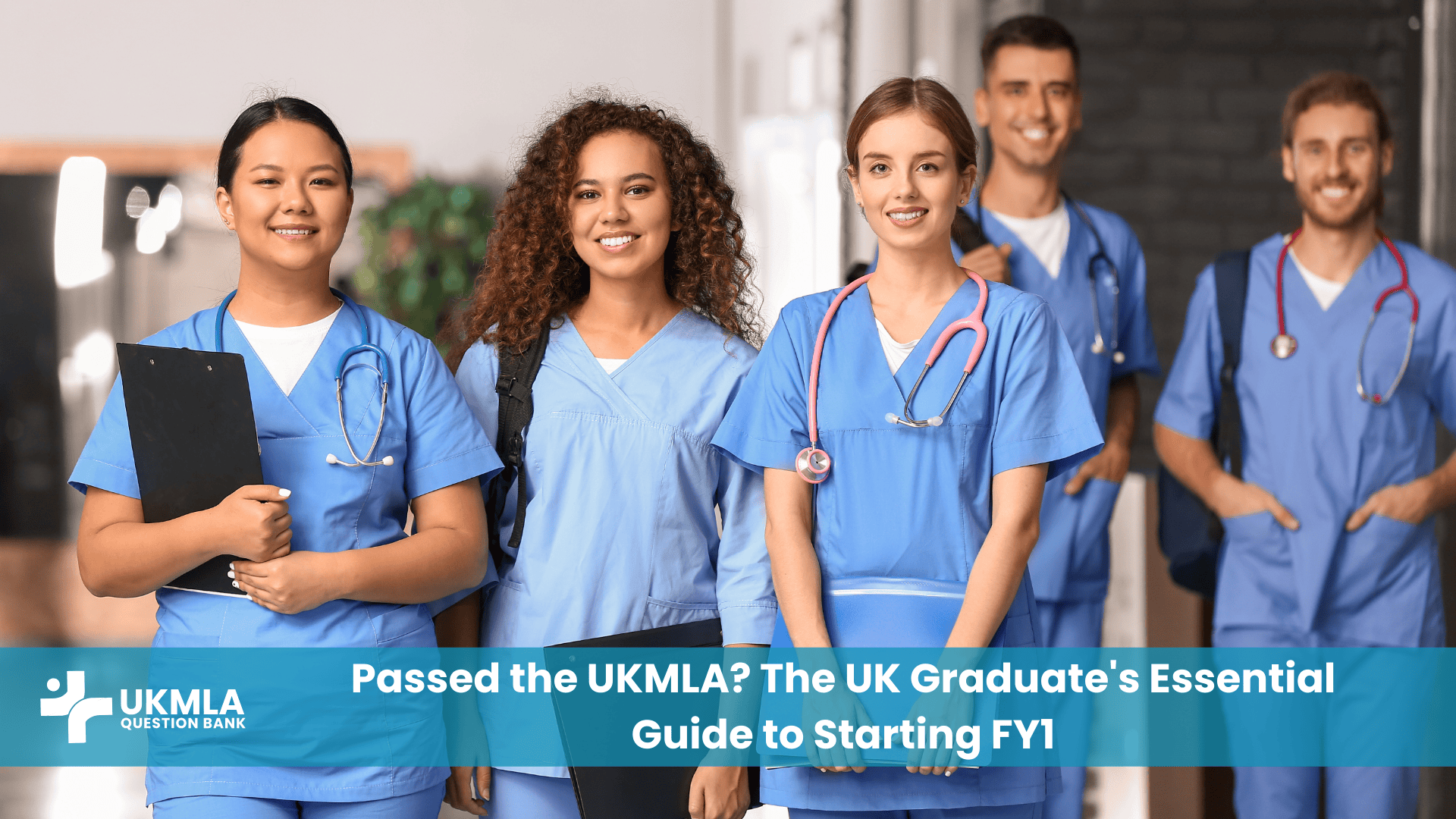Introduction
Understanding post-operative complications UKMLA requires is a high-yield topic that sits at the heart of surgery essentials. The immediate period after an operation is a time of heightened vulnerability for any patient. As a junior doctor, you will be on the front line, responsible for monitoring these patients, identifying when something is wrong, and initiating the correct response. The challenge is immense; the potential causes for a patient’s deterioration are vast, ranging from minor issues to life-threatening emergencies.
This guide is designed to give you a clear, structured, and memorable framework for this complex topic. While a systematic A-E assessment is always your first priority, the classic “7 W’s” mnemonic is an invaluable tool for building a differential diagnosis, particularly for the common problem of post-operative fever. We will explore the immediate post-op period, take a deep dive into each of the 7g W’s, and cover other common problems to ensure you are fully prepared for any related scenario in your UKMLA exams.
Table of Contents
ToggleThe Immediate Post-Operative Period: Beyond the “W’s”
In the first few hours after surgery, the most immediate threats are often related to the surgery itself and the effects of anaesthesia. Your first priority is always a rapid A-E assessment.
The A-E Assessment on the Post-Op Ward
Never forget your basic life support principles. If you are called to see an unwell post-operative patient, start with Airway, Breathing, Circulation, Disability, and Exposure. This systematic approach ensures you identify and treat the most life-threatening problems first before getting lost in a complex differential diagnosis. A patient can be bleeding internally, but if their airway is not patent, that is the first problem you must solve.
Managing Immediate Life-Threats
Haemorrhage: Bleeding is a major concern that can quickly lead to hypovolaemic shock.
Reactionary Haemorrhage: This occurs within the first 24 hours. During surgery, hypotension and vessel spasm can temporarily stop bleeding from a small vessel that wasn’t formally ligated. As the patient’s blood pressure returns to normal post-operatively, this vessel can re-open and begin to bleed. Look for signs of shock (hypotension, tachycardia, pallor), a rapidly swelling wound, or high output from surgical drains.
Airway & Breathing: The residual effects of anaesthesia can cause a range of respiratory issues.
Respiratory Depression: Opioid analgesia and residual anaesthetic agents can suppress the respiratory drive, leading to a low respiratory rate and hypoxia.
Airway Obstruction: In a drowsy patient, the tongue can fall back and obstruct the airway. Laryngospasm can also occur after extubation. Look for stridor, tracheal tug, and paradoxical chest movements. For more, see our guide on perioperative and anaesthesia care.
Urine Output: Oliguria (low urine output, defined as <0.5 mL/kg/hr) is a critical sign of end-organ hypoperfusion.
Causes: Most commonly, it is pre-renal, caused by hypovolaemia from blood loss or inadequate fluid replacement. However, you must also consider renal causes (acute kidney injury from nephrotoxic drugs) and post-renal causes (an obstructed or misplaced urinary catheter).
Management: The first step is often a fluid challenge, but first, you must ensure the catheter is not blocked.
Unlocking the 7 W’s of Post-Operative Complications UKMLA
The “7 W’s” mnemonic is a powerful tool for remembering the common causes of post-operative fever, organised by their typical time of onset.
Table 1: The 7 W’s Mnemonic for Post-Operative Fever
| Mnemonic | Cause | Typical Timing |
|---|---|---|
| Wind | Lungs (Atelectasis, Pneumonia) | Day 1-2 |
| Water | Urinary Tract Infection (UTI) | Day 3-5 |
| Wound | Surgical Site Infection (SSI) | Day 5-7 |
| Walking | DVT / PE (VTE) | Day 5+ |
| Wonder Drugs | Drug-Induced Fever | Anytime |
| What Did We Do? | Lines, Drains, Collections | Anytime |
| Waste | Deep Abscess | Day 7+ |
Wind (Day 1-2): Pulmonary Complications
The lungs are the most common source of fever in the first 48 hours post-op.
Atelectasis: This collapse of alveoli is extremely common. Pain from a surgical incision (especially abdominal or thoracic) prevents patients from taking deep breaths. This leads to the plugging of small airways with mucus, air trapping, and collapse. This creates a ventilation-perfusion mismatch and can cause a low-grade fever. Prevention is key: excellent analgesia, chest physiotherapy, and incentive spirometry are crucial.
Pneumonia: A hospital-acquired pneumonia (HAP) is a more serious infection. It can be a progression from atelectasis or occur from aspiration during anaesthesia. Risk factors include smoking, COPD, and prolonged ventilation. Look for a productive cough, purulent sputum, and consolidation on a chest X-ray. For more, see this guide on respiratory medicine.
Water (Day 3-5): Urinary Tract
A Catheter-Associated UTI (CAUTI) is the classic cause of fever starting around day 3-5. An indwelling urinary catheter acts as a direct line for bacteria to ascend into the bladder. Look for a fever, delirium (especially in elderly patients), and suprapubic tenderness. A urine dipstick may show nitrites and leucocytes, but a formal urine culture is needed for diagnosis.
Wound (Day 5-7): Surgical Site Infection (SSI)
This refers to an infection of the surgical incision. Look for classic signs of inflammation: erythema (redness), warmth, swelling, pain, and purulent discharge. A superficial SSI involves just the skin and subcutaneous tissue. A deep SSI can involve muscle and fascia and is much more serious. Proper wound care and, if necessary, a wound swab for culture are key management steps. This requires a strong understanding of infectious disease essentials.
Walking (Day 5+): Venous Thromboembolism (VTE)
Surgery and the subsequent immobility create a perfect storm for clot formation, as described by Virchow’s triad (stasis, endothelial injury, hypercoagulability).
Deep Vein Thrombosis (DVT): A blood clot forms in a deep vein, usually in the leg. Look for a unilateral, swollen, red, and painful calf. A Wells score can help stratify risk, and a Doppler ultrasound is the diagnostic imaging of choice.
Pulmonary Embolism (PE): A piece of the clot breaks off and travels to the lungs. This is a life-threatening emergency. Suspect it in any post-op patient with sudden shortness of breath, pleuritic chest pain, haemoptysis, or unexplained tachycardia.
Prophylaxis is critical. The NICE guideline on VTE prevention provides a clear framework for assessing risk and prescribing mechanical (e.g., compression stockings) and pharmacological (e.g., low-molecular-weight heparin) prophylaxis for surgical patients.
Wonder Drugs (Anytime)
Always review the drug chart. Many medications can cause a fever, and this is a diagnosis of exclusion. Common culprits include many antibiotics (a classic cause of a persistent fever despite treatment for an infection), anti-epileptics, and anaesthetic agents. Malignant hyperthermia is a rare but life-threatening reaction to anaesthesia that causes a rapid, extreme fever.
What Did We Do? (Anytime): Iatrogenic Causes
Consider complications arising from medical interventions. An infected IV cannula (phlebitis) can cause local pain and tracking erythema up the arm. A central line can be a source of a bloodstream infection (CLABSI), which can lead to sepsis. Reactions to blood products are also an important cause of fever.
Waste (Day 7+): Deep Collections and Abscesses
If a fever persists or develops late (after the first week), you must suspect a deep collection of pus (an abscess) related to the surgery. Examples include a subphrenic abscess after an operation on the stomach or a pelvic abscess after a low anterior resection. The patient may have “swinging fevers” (spiking temperatures), localized pain, and a general failure to thrive post-operatively. This requires a CT scan or ultrasound to diagnose and often needs percutaneous or surgical drainage.
Beyond the Fever: Other Common Post-Op Problems
Not all complications cause a fever. Be aware of these common issues:
Post-Operative Nausea and Vomiting (PONV): Extremely common and distressing. Management involves identifying risk factors and using a multi-modal antiemetic strategy (e.g., combining ondansetron, cyclizine, and dexamethasone).
Post-Operative Ileus vs. Bowel Obstruction: Ileus is a temporary, functional paralysis of the gut that is expected for 2-3 days after abdominal surgery. The abdomen may be distended but is typically soft and non-tender with absent bowel sounds. A mechanical obstruction is a physical blockage, often from post-surgical adhesions. The patient may have colicky pain, vomiting, and high-pitched, “tinkling” bowel sounds.
Wound Dehiscence: This is the separation of the layers of a surgical wound. It can be superficial, but if it involves all layers, it leads to evisceration (extrusion of internal organs), which is a surgical emergency requiring immediate return to theatre.
Frequently Asked Questions (FAQ) about Post-Operative Complications
It’s the three factors that contribute to thrombosis: 1) Stasis of blood flow (from immobility), 2) Endothelial injury (from the surgery itself), and 3) Hypercoagulability (the inflammatory response to surgery makes blood more likely to clot).
The first step is often a bladder scan to confirm the volume of retained urine. If significant (>500ml), the patient will likely need a temporary in-and-out or indwelling urinary catheter to decompress the bladder.
This is a life-threatening leak from a surgical join in the bowel. Suspect it in a patient who appears disproportionately unwell 5-7 days after GI surgery, with tachycardia, abdominal pain, fever, and signs of peritonitis or sepsis.
It is the single most effective way to prevent multiple complications. It helps prevent atelectasis (“Wind”), reduces the risk of DVT/PE (“Walking”), and helps stimulate the return of bowel function (preventing ileus).
It is a rare but life-threatening inherited reaction to certain anaesthetic agents (like halothane and suxamethonium). It causes a rapid rise in temperature, muscle rigidity, and metabolic acidosis, and requires immediate treatment with dantrolene.
It can be difficult, but in an ileus, both the small and large bowel are typically dilated. In a small bowel obstruction, you typically see dilated loops of small bowel with collapsed large bowel distally. A CT scan is often more definitive.
Key measures include appropriate pre-operative antibiotic prophylaxis given within one hour of incision, meticulous sterile technique in theatre, and proper post-operative wound care.
Think of the 4 “H’s” and sepsis: Haemorrhage (bleeding), Hypovolaemia (dehydration), Heart (e.g., MI, arrhythmia), Heat (sepsis), and spinal shock in spinal surgery.
A junior doctor’s review should include checking the patient’s vitals, asking how they feel (pain, nausea), reviewing the fluid balance chart, checking blood results, examining the wound and drain outputs, and ensuring they have adequate analgesia and VTE prophylaxis prescribed and administered.
Delirium. It is a medical emergency. Always screen for and treat the underlying cause (like infection, dehydration, pain, or constipation) using a structured approach.
Conclusion
The post-operative patient presents a unique diagnostic challenge, but one that can be navigated effectively with a structured approach. While the A-E assessment remains your primary tool for any acute deterioration, the “7 W’s” mnemonic provides an invaluable secondary framework. It allows you to systematically consider the most likely causes of fever based on a clear timeline, transforming a broad differential diagnosis into a manageable list of probabilities.
By committing this framework to memory and understanding the pathophysiology behind each “W,” you are not just preparing to answer exam questions; you are building the clinical reasoning skills essential for safe and effective practice on the surgical wards. This structured thinking is precisely what examiners are looking for, and it will be a cornerstone of your success in the UKMLA AKT.



